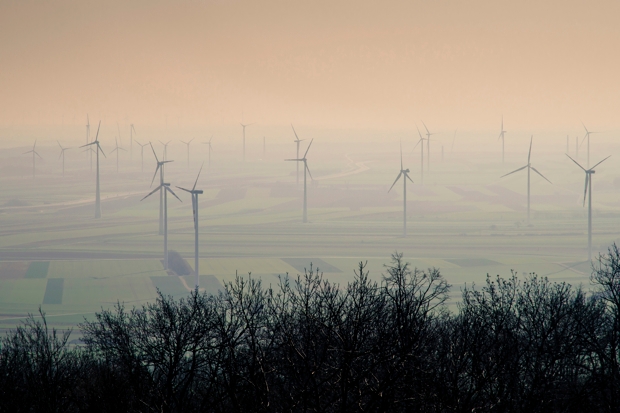‘Surprisingly’, writes Geoffrey Lean (Daily Telegraph, 4 April), ‘two thirds of the country support onshore wind turbines’. It should not surprise him: those would be the two thirds who live in towns and cities, the people whose distinctive, familiar skylines are on the whole safe. When proposed city structures reach the height of St Paul’s they are the subject of deliberation and careful design. Not so in the country.
I live in the East Mendips, a soft target for onshore wind turbines as it has little protection from developers: this is because its hills were sacrificed to quarrying after the war and it therefore does not qualify as an area of outstanding natural beauty. And yet it is outstandingly beautiful. Like many other areas of rural England, its character is unique, its many highly individual villages set among the wooded ridges, dips and valleys of an undulating limestone landscape where copses, church towers and outcrops on the varying skyline are particularly important. It is currently undergoing an economic revival: families and businesses are relocating here from the crowded south-east, and tourism increases every year. Again, like much of rural England, its character has been preserved for centuries by countless anonymous curators — charities, village enterprises, churchwardens, smallholders, heritage groups, local councillors — who monitor and consider every new development in the light of a social and visual context they care deeply about.
To these people and their neighbourhoods, the random imposition of standardised industrial structures so breathtakingly out of proportion, so permanently visible and so impervious to local human scale is a shockingly barbaric act of government vandalism. The relentlessly utilitarian case for siting them indiscriminately throughout the country ignores objections on what are dismissed as unquantifiable ‘aesthetic’ grounds. ‘Visual impact’ is considered only in the light of officially listed buildings, but never in relation to the village streets, fields, cottages, rivers, vistas, paddocks and country lanes, which all have what Gerard Manley Hopkins once called their own ‘sweet especial’ beauty.








Comments
Join the debate for just £1 a month
Be part of the conversation with other Spectator readers by getting your first three months for £3.
UNLOCK ACCESS Just £1 a monthAlready a subscriber? Log in